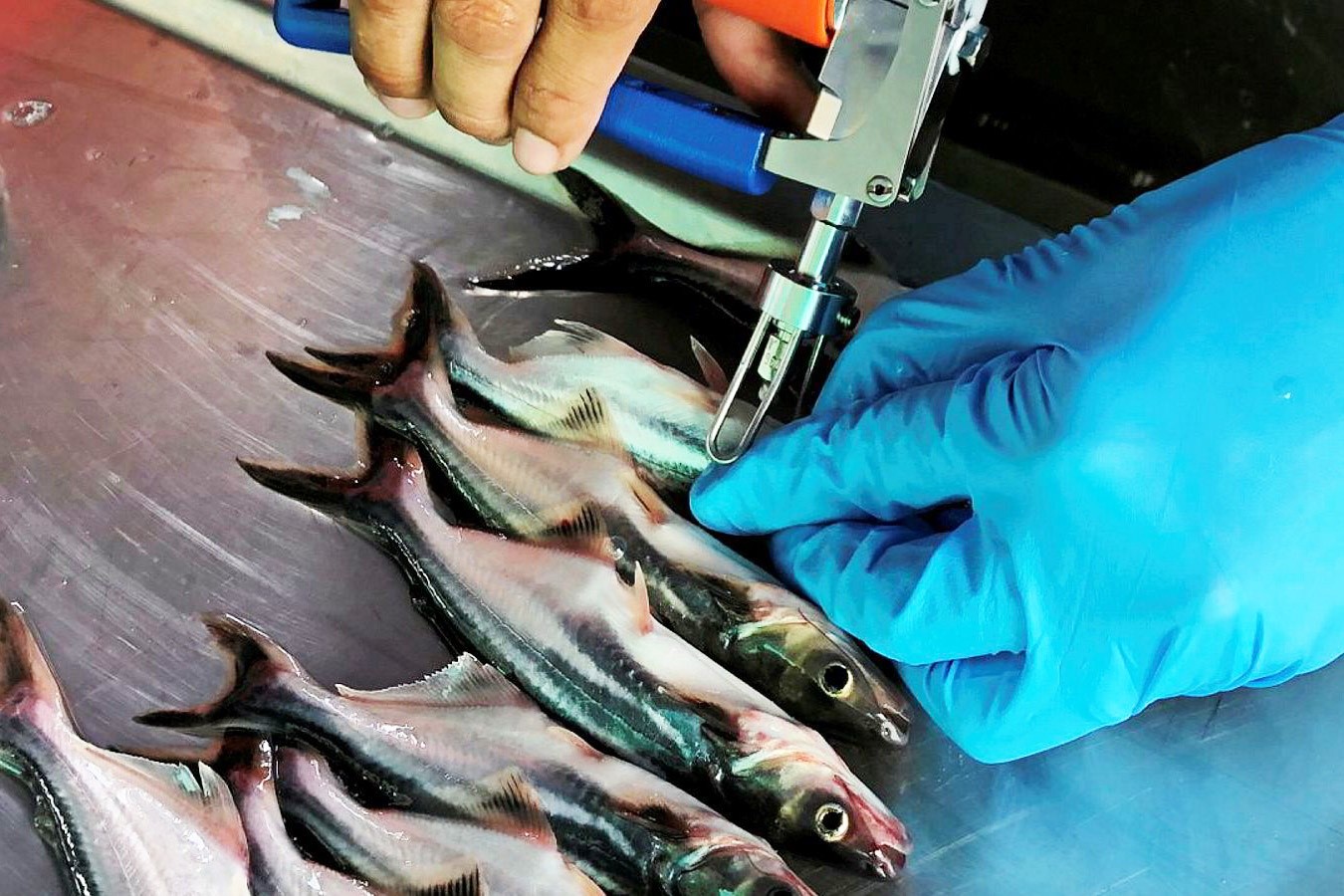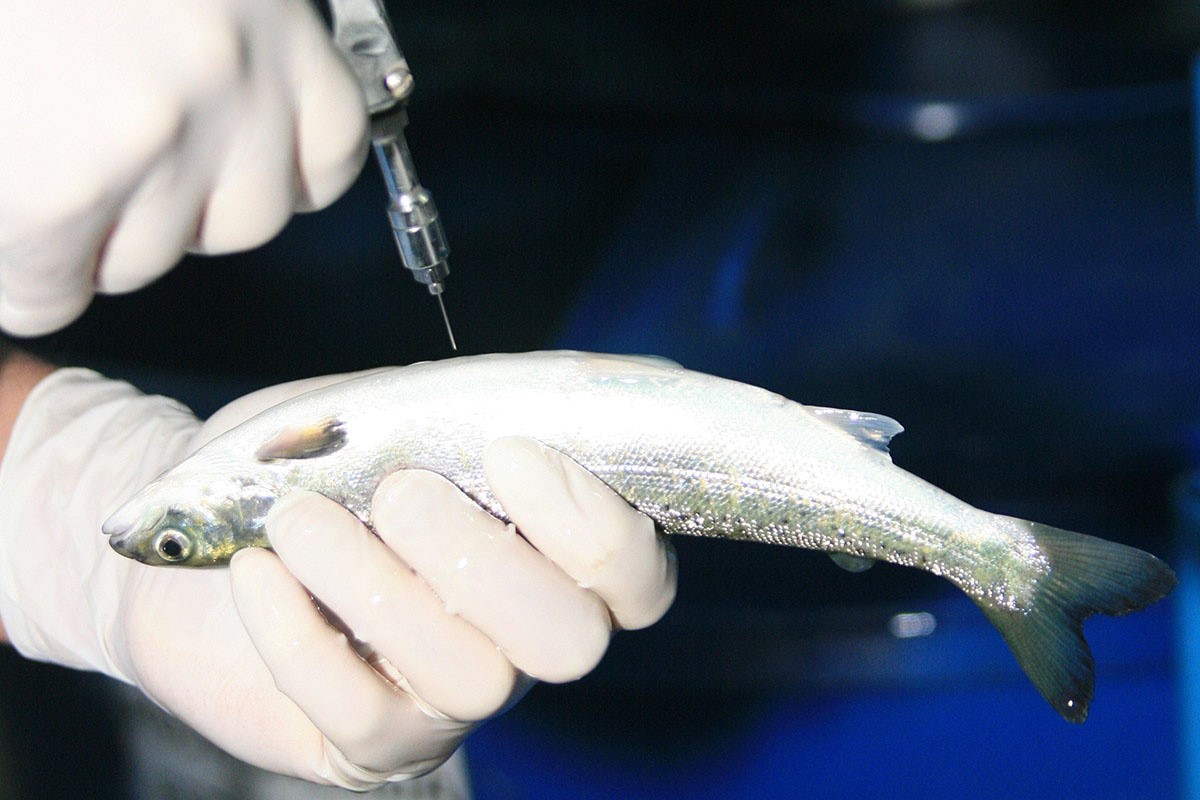To increase the effectiveness of fish disease prevention, understanding the technical process of vaccination injection for fish is essential.
Currently, catfish farming is developing very strongly and brings high economic value to farmers. However, if you do not know how to prevent fish diseases, the loss rate will be very large. Besides, almost all pangasius farming areas have had common diseases such as hemorrhage, white gills, white liver and especially liver and kidney diseases – causing huge losses to farming. There are farming areas where the rate of infected pangasius is almost 100%, the death rate is high, sometimes up to 50-70% and the risk of spreading the disease is very difficult to avoid if there are no effective prevention measures. In particular, the drug resistance of this pathogenic bacteria is increasing due to lack of timely detection and appropriate treatment, low treatment effectiveness, making it difficult to treat the disease during the farming process. Recently, vaccines to prevent a number of fish diseases are gradually being developed and applied, especially for fish hatcheries. Vaccination is an effective tool in preventing fish diseases, while reducing economic losses and treatment costs. And more importantly, healthy fish do not have to use antibiotics, thus minimizing antibiotic resistance.

Image of fish farming
I. PREPARATION
Prepare tools: vaccine, needle, syringe, anesthetic, injection table, specialized tools for transporting fish and aeration.
For fish: Check the health of the fish through the fish’s expression: the fish is agile, healthy, not lethargic, has a floating head, etc. and can send samples to the laboratory to isolate bacteria, PCR for diagnosis disease, if the fish is healthy and does not have pathogens, proceed with the next steps to prepare for vaccination. If the fish shows unusual signs or is suspected of being infected, do not vaccinate. Be careful not to feed fish within 24 hours before vaccination.
To make the vaccination process as convenient and quick as possible, you should prepare an automatic cylinder to vaccinate fish.
II. VACCINE TECHNIQUE FOR FISH
After preparation is complete, it is necessary to anesthetize the fish.
To anesthetize, transfer the fish from the pond to the anesthetic tank, and anesthetize. To anesthetize using the bathing method, you first need to dissolve the anesthetic in the water, then put the fish in. The anesthetic will penetrate through the fish’s gill silk during respiration, mix into the blood and move to the brain, causing the fish to go into an anesthetic state.
Image of vaccine injection for fish
At that time, the fish will slow down, then lose balance and will not react when being captured or touched. Anesthetizing the fish will make vaccination easier and faster, minimizing damage and scratches to the fish, slipping off slime, peeling off scales… and at the same time make the vaccination process easier. After the anesthesia is complete, it is transferred to the injection table to proceed with the vaccination.
The vaccine injection site can be the back muscle or the abdominal cavity. Depending on the farm, the appropriate injection site can be chosen. The most favorable injection location is in the fish’s abdominal cavity, between the two abdomens.
After vaccination, release fish into the pond. And feed the fish again after 12-24 hours. When feeding the fish, you should add multivitamins and supplements to increase the fish’s resistance. A-Vita C max product can be used to mix into fish food to increase resistance and reduce stress after vaccination.
Image of vaccine injection for fish
Currently, there are many different types of aquatic vaccines, but you should choose a vaccine suitable for each region’s epidemiology to vaccinate accordingly. To ensure the best protection against local diseases, and minimize sick fish that require treatment with antibiotics. Reduce economic losses.
Vaccination techniques for fish are highly effective in disease prevention, especially reducing antibiotic resistance in fish.


